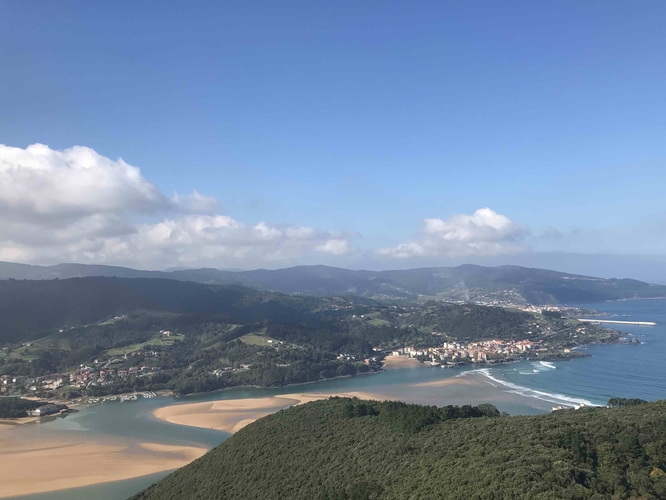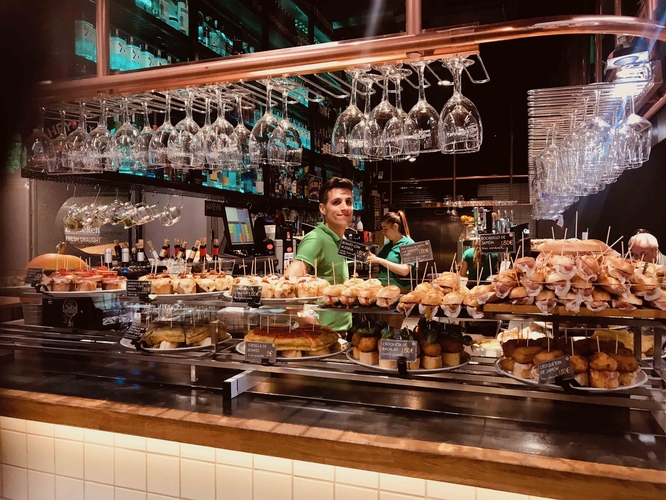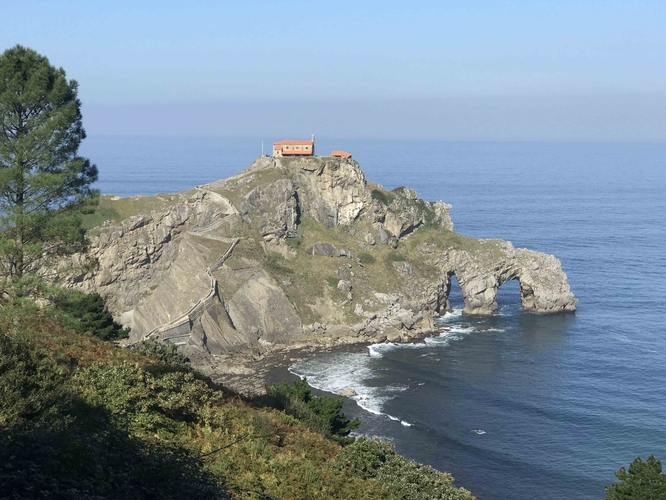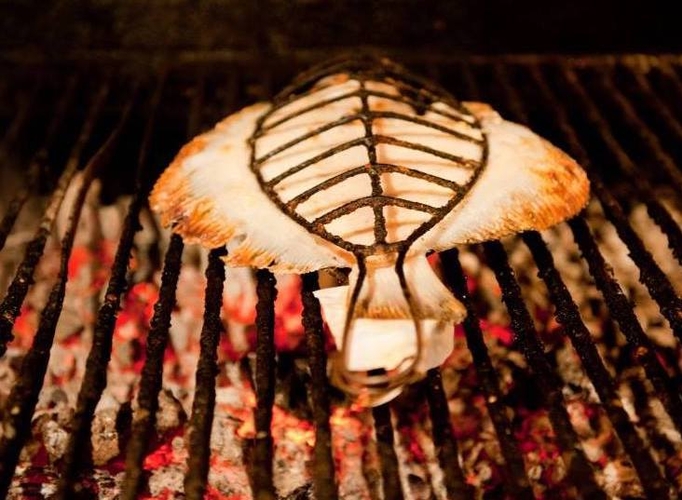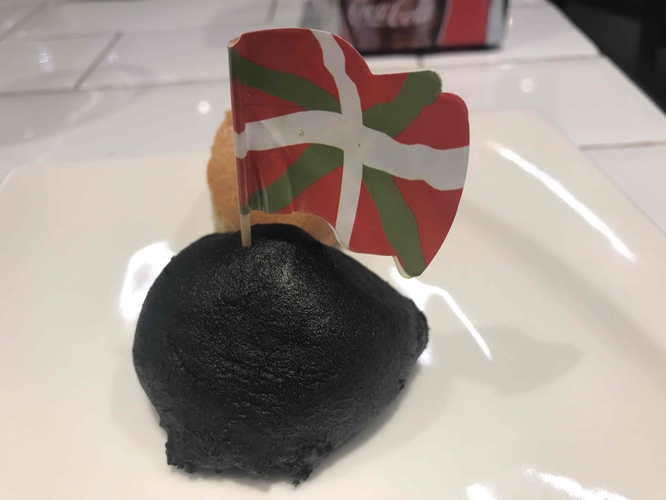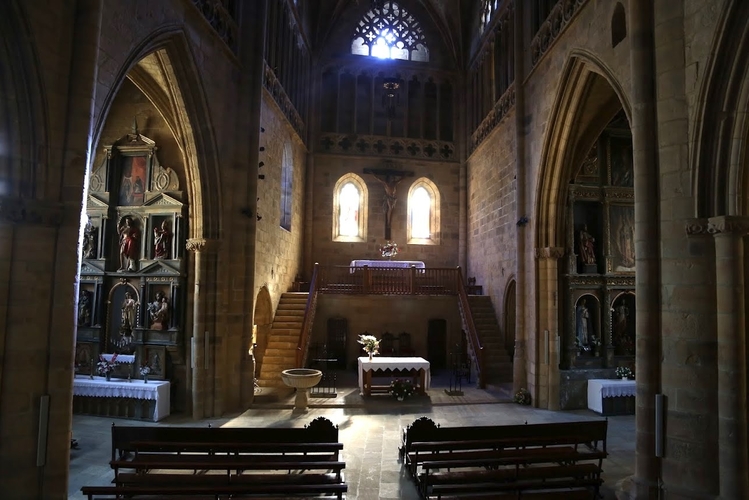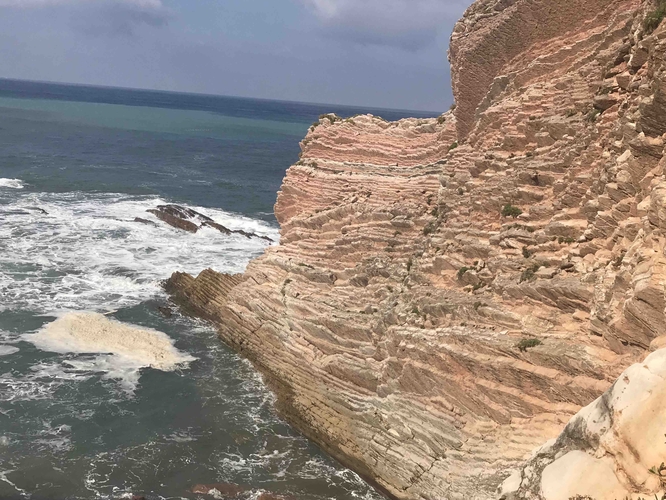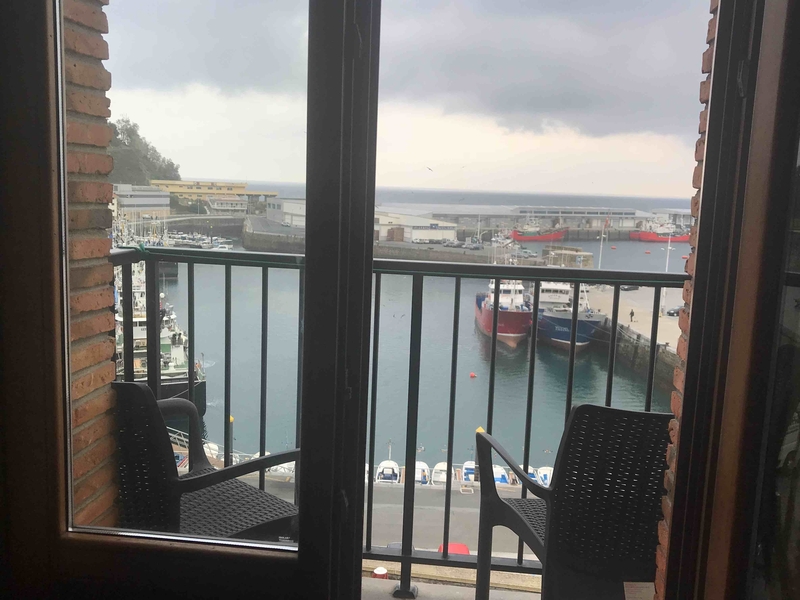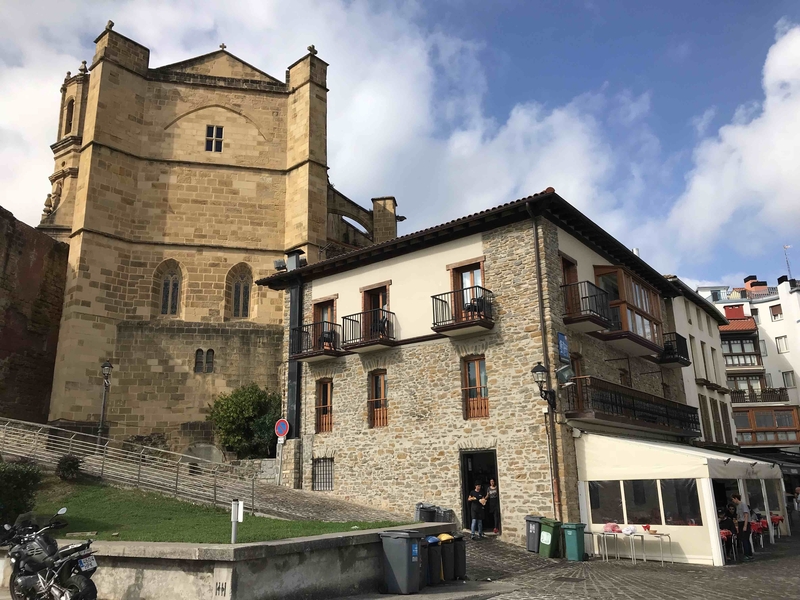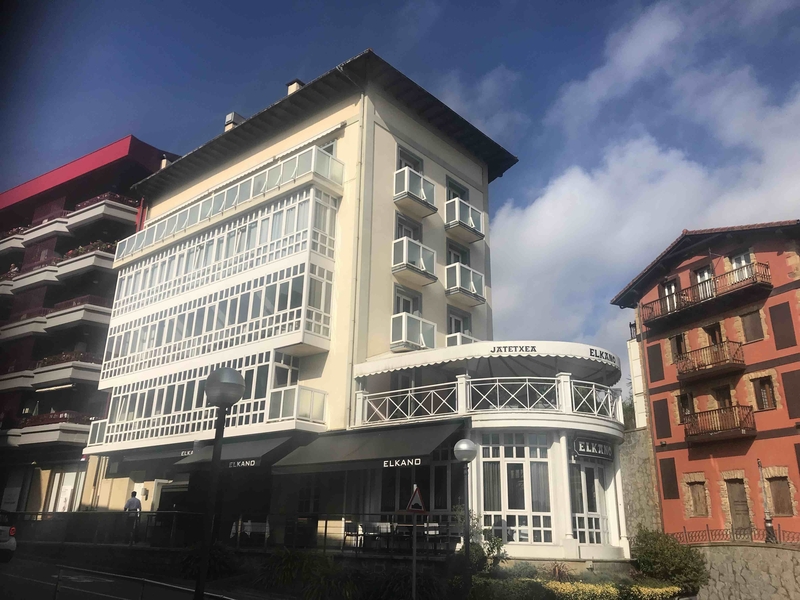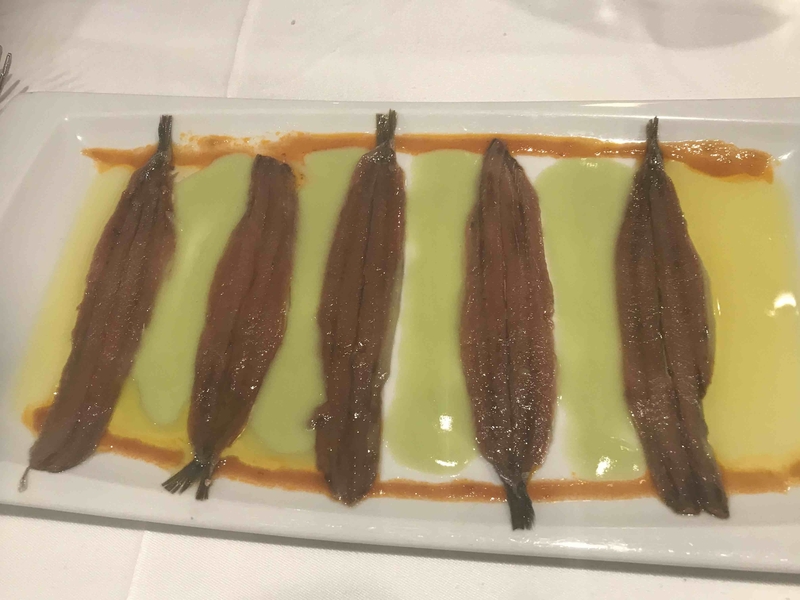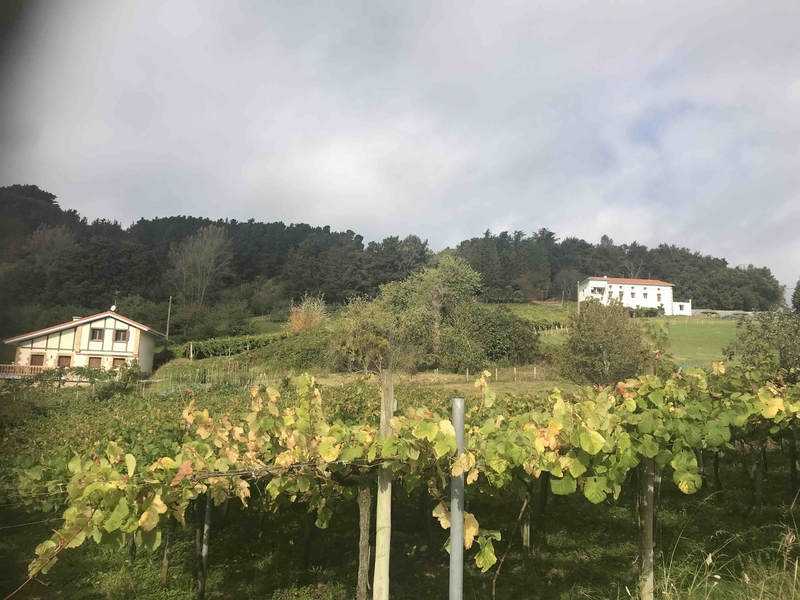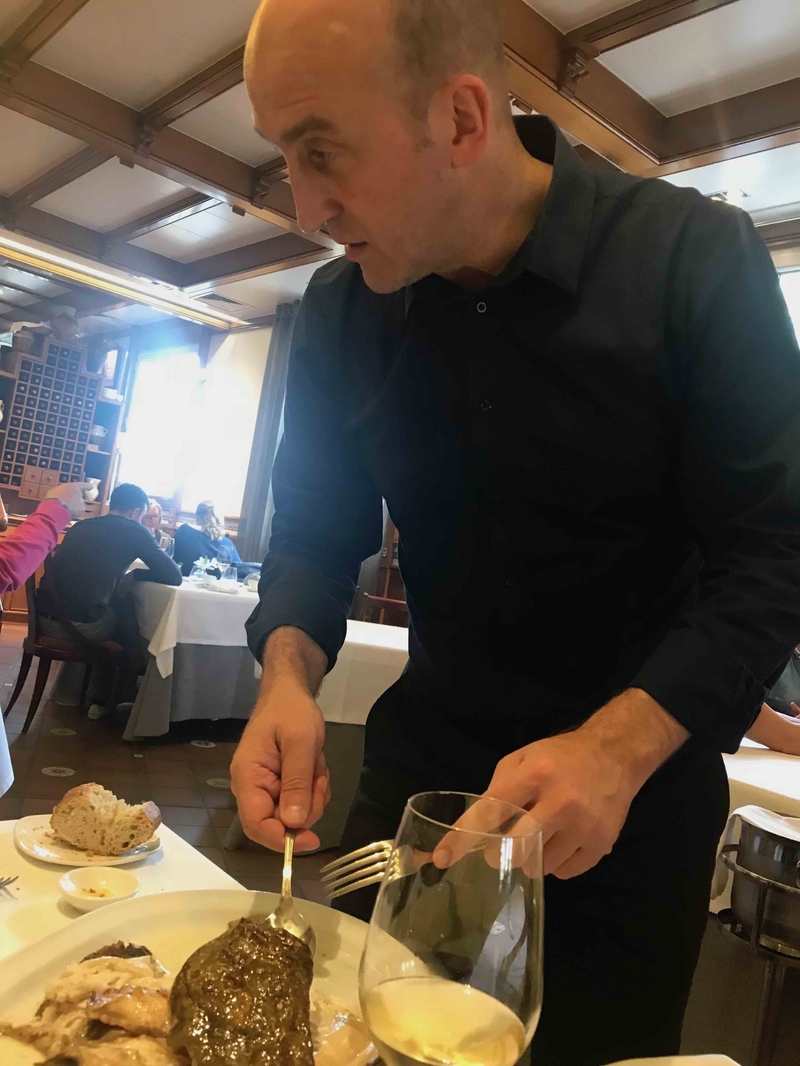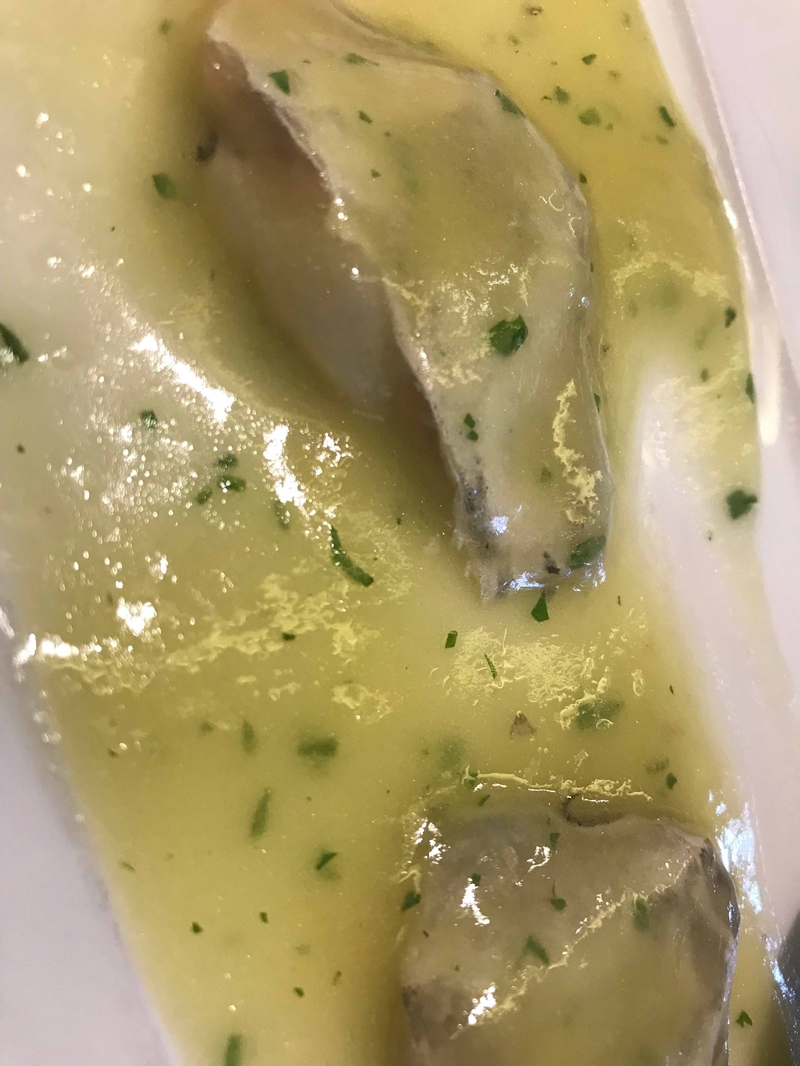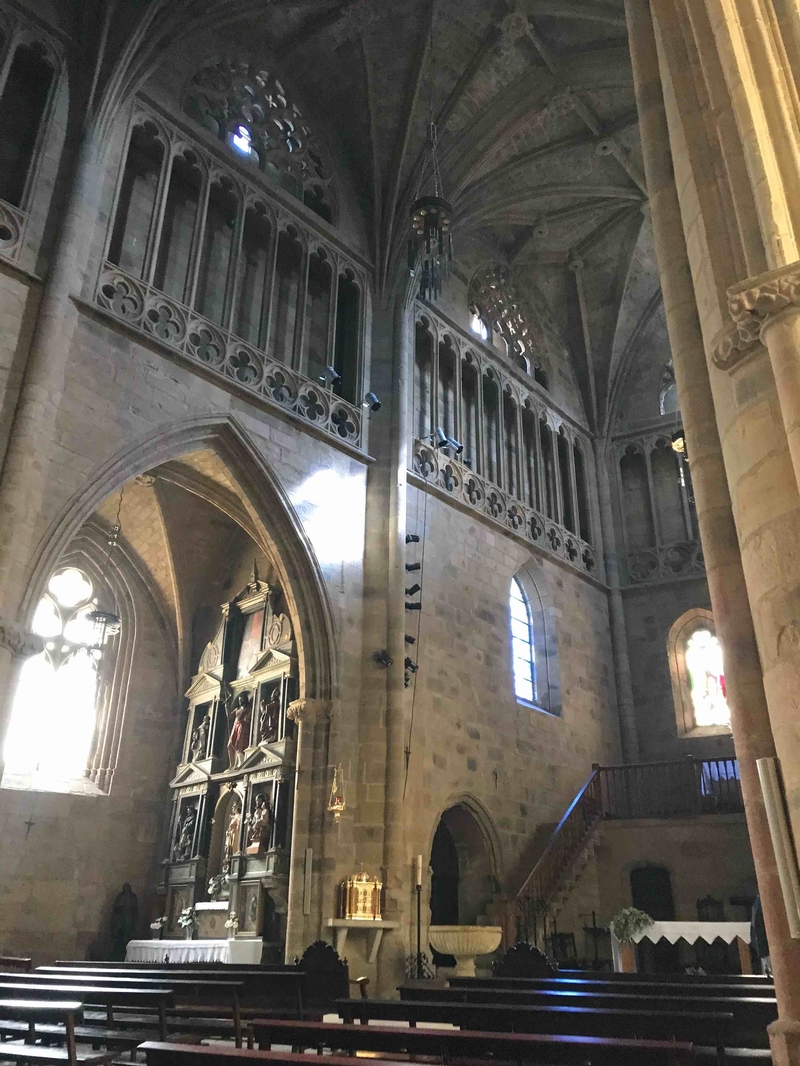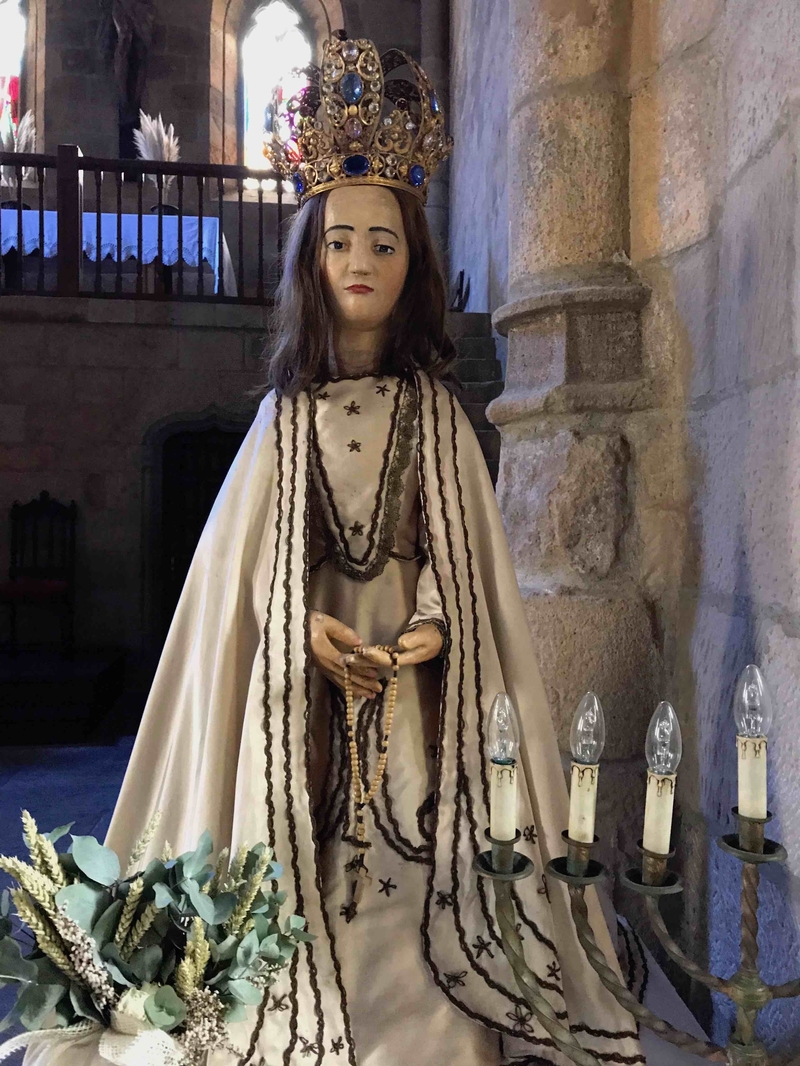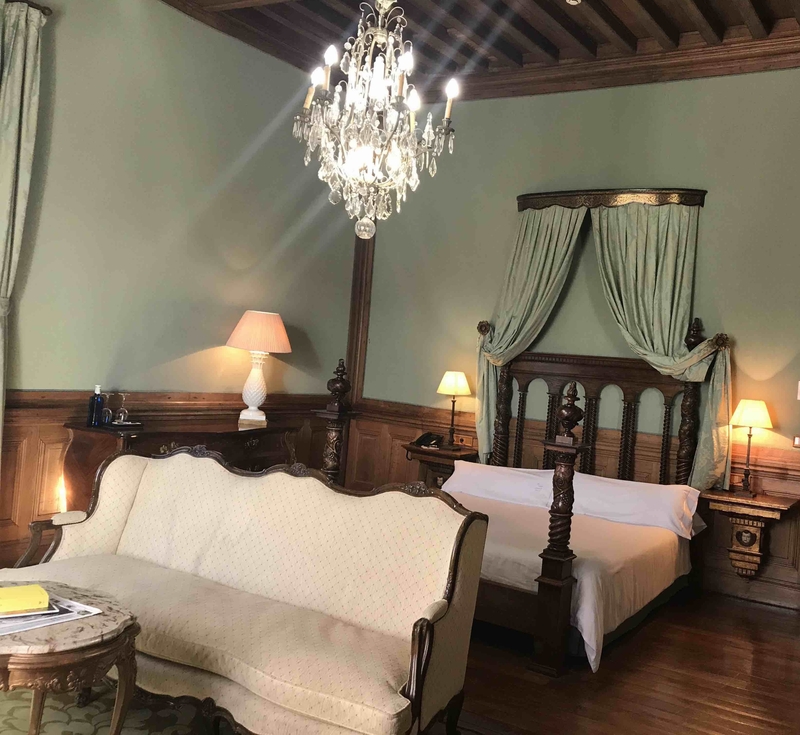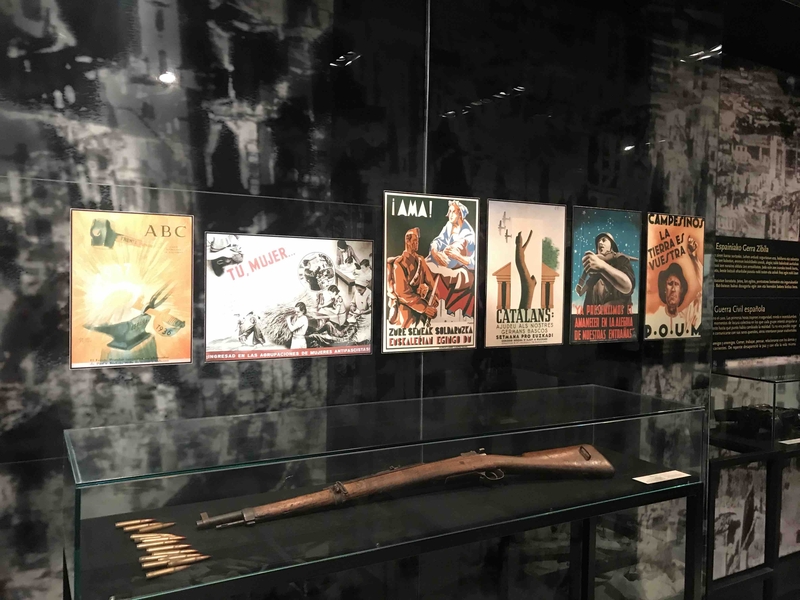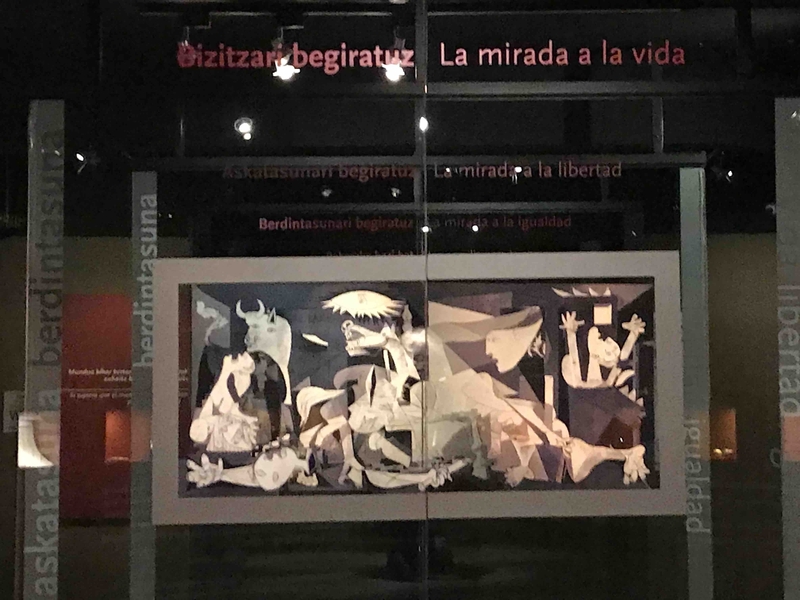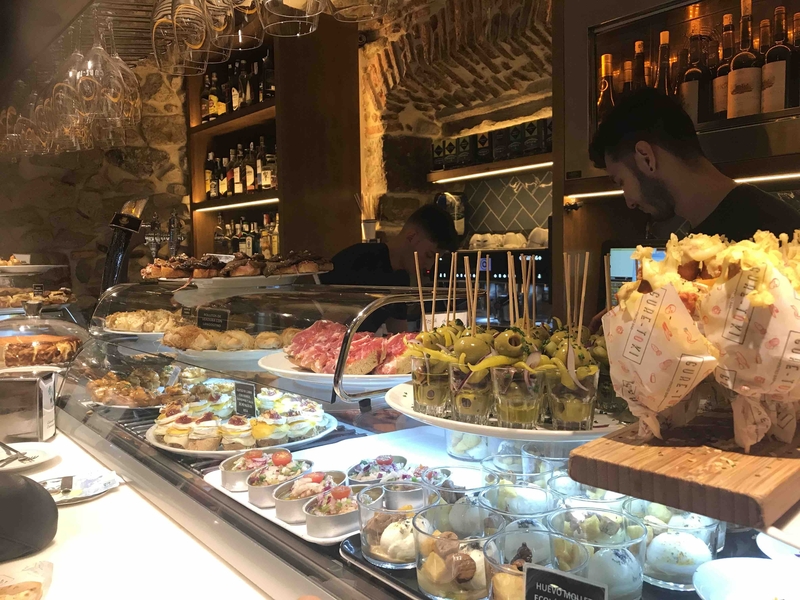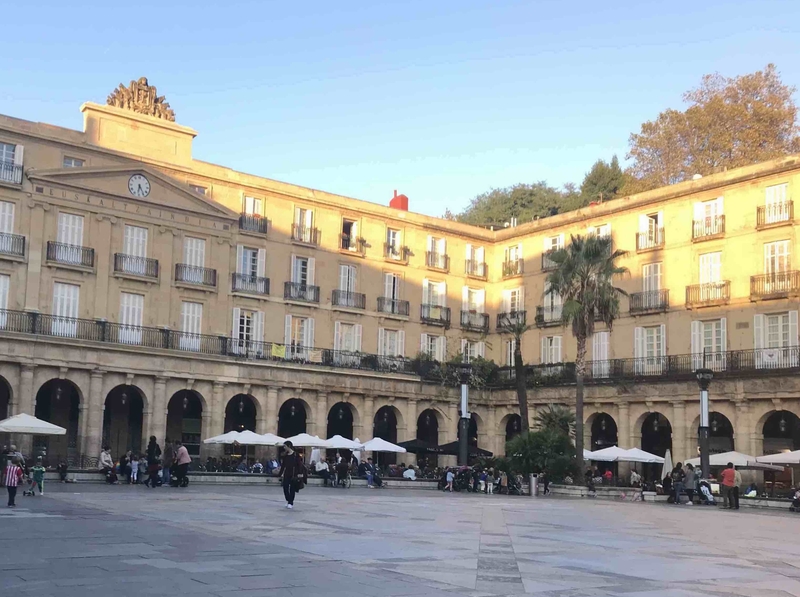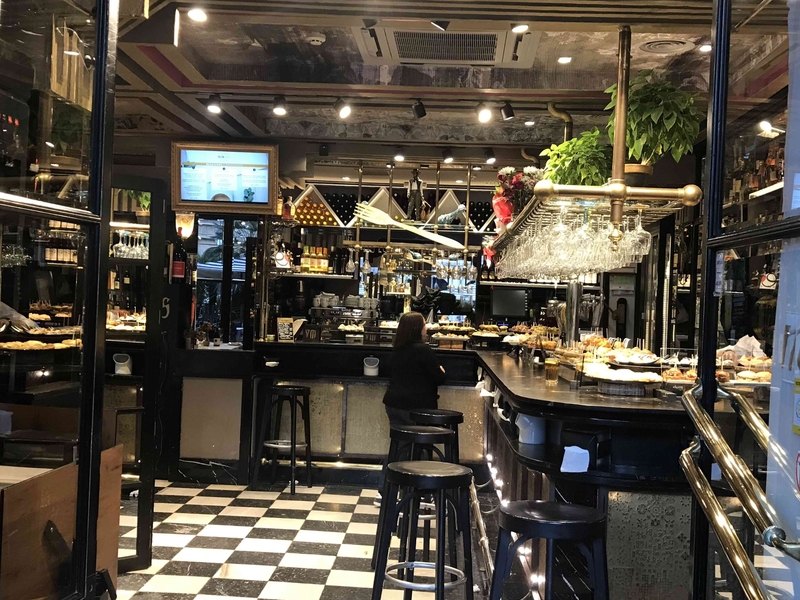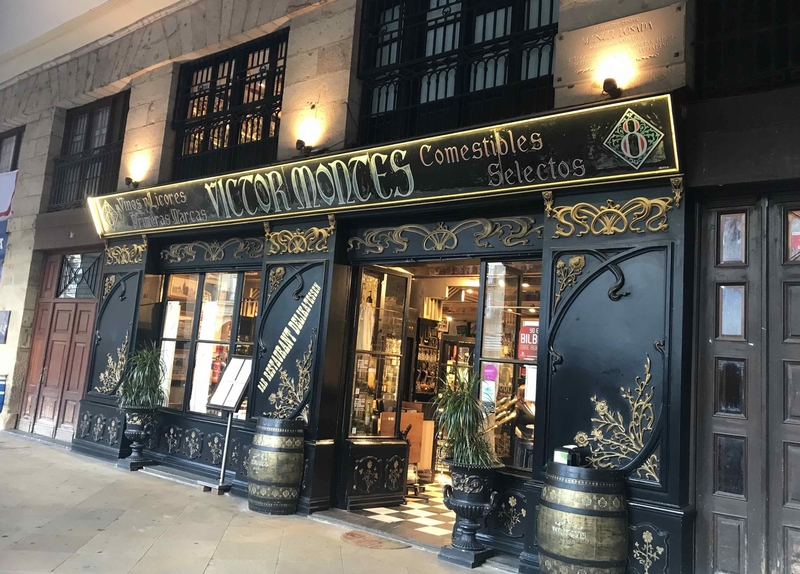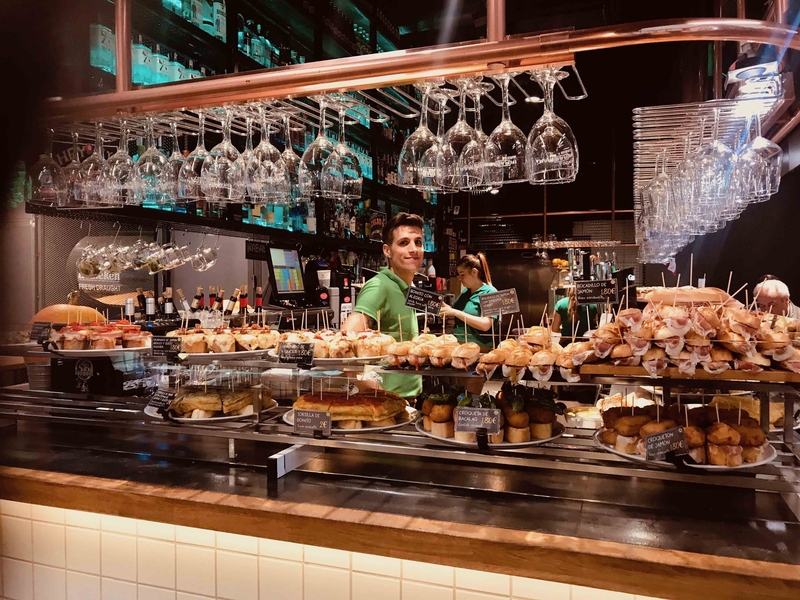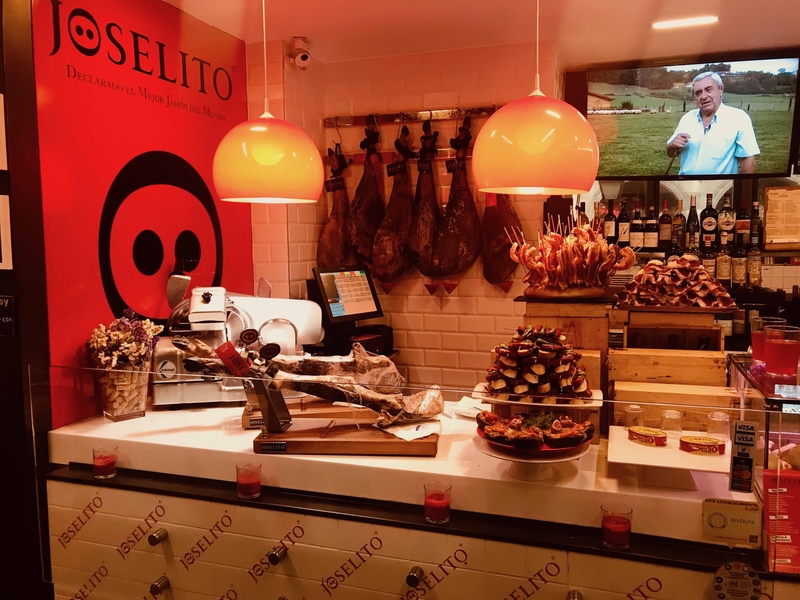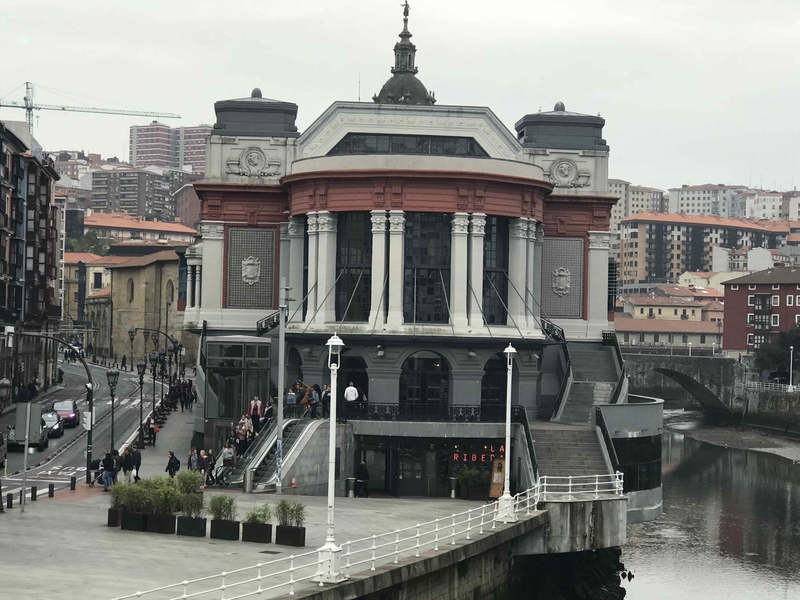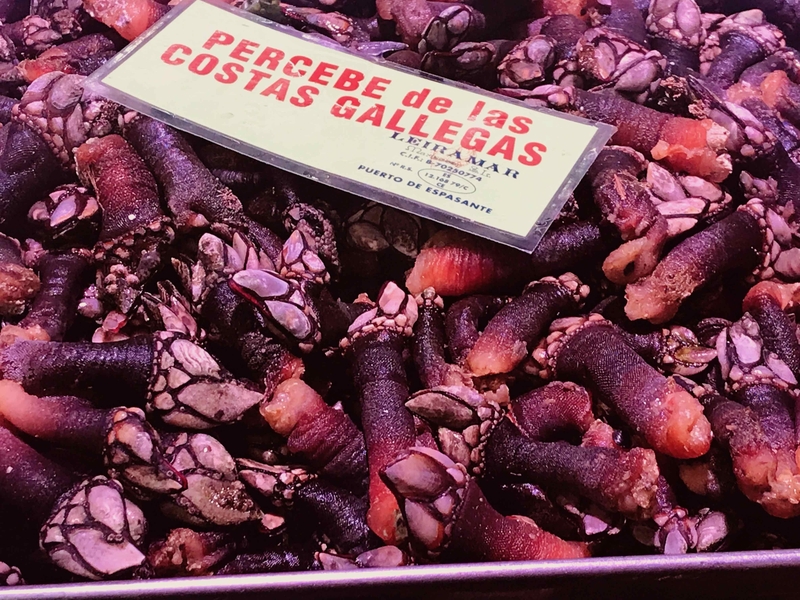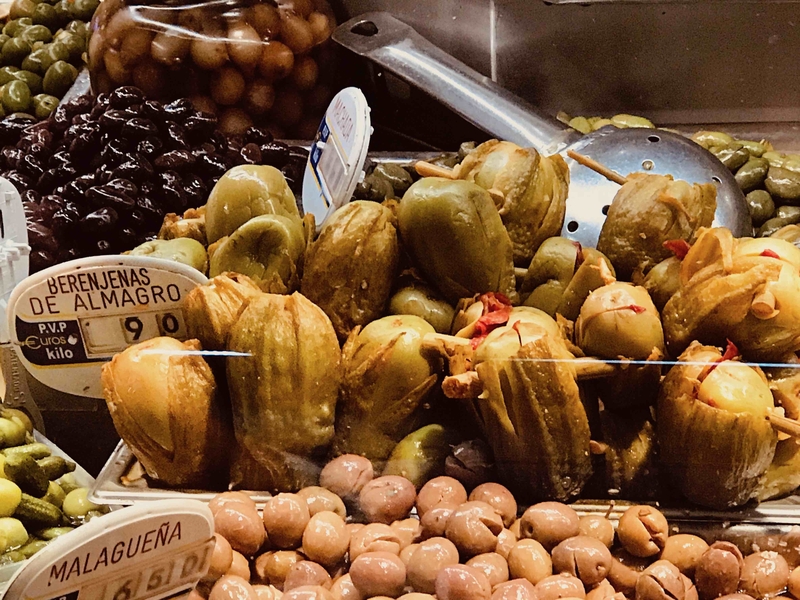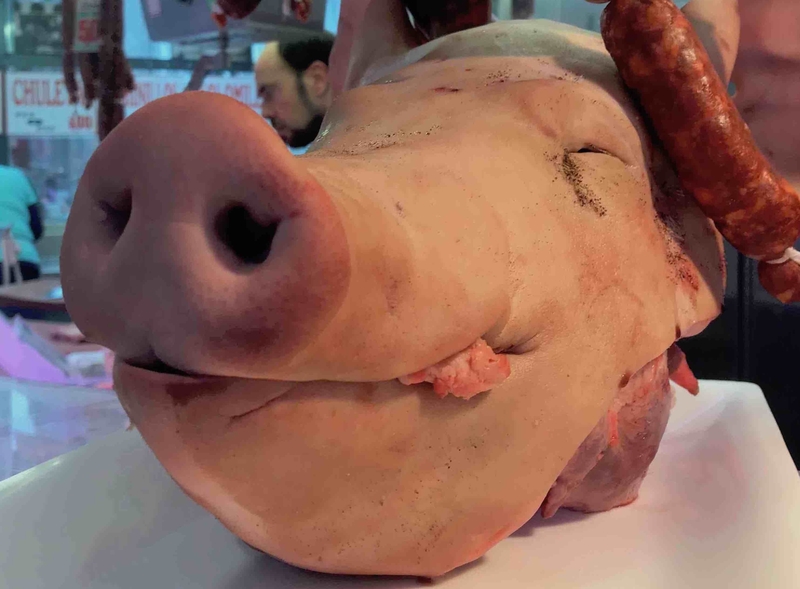Basque delicacies and glorious coastal walking thrill Neil Sowerby
CRISTOBAL Balenciaga and Juan Sebastian Elcano make an unlikely pairing. One, the gay son of a sailor and a seamstress who rose to be Paris’s 20th century king of couture, the other an iron man mariner who after Magellan’s death completed the first circumnavigation of the Earth with a skeleton crew.
Next that classic Basque treat, kokotxas (hake throats in a salsa verde). “Just tip them down your throat – it’s all about texture,” said our mentor
In Getaria, the Basque fishing port where they were born 400 years apart, both men are honoured, Balenciaga with a vast modern museum housing 3,000 of his creations, attached incongruously to a palace once home to his aristocratic mentors… Elcano with two statues, the more impressive crowning an old bastion overlooking the port.
So much for civic pride. The greatest monument to the old sea dog was the reason we had arrived a day early at the starting point of our Basque Coast walking holiday – the restaurant named after him. Our adventures weren’t going to match Elcano’s but at least we would be marching on a full stomach. Very Basque.
We had managed to get a lunch booking at Michelin-starred Elkano, arguably Spain’s finest fish restaurant. It was for 2.30pm, giving us plenty of time for a limbering up hike along the wild sea front to Zarautz and back through vine-clad hills producing the local white, Tzakoli.
This circular walk was organised by award-winning tour operators Purely Pyrenees. The next four days would see us do three stages along the coastline, our bags taxied on ahead, the itinerary not too demanding except on some calf-tightening uphill stretches. But first we had to tackle Elkano’s legendary wood-grilled rodaballo (wild turbot).
The previous evening, after being shuttled in from Bilbao Airport 50 miles away following our easyJet flight from Manchester, we had devoured a supper of house-cured anchovies, then langoustines and monkfish from the outside grill, at Jatatxea Iriba in Getaria’s old town.
Most of Getaria’s restaurants boast these grills. At nightcap time the wood smoke from the one two floors below our room at the Pension Katrapona forced us to retreat indoors from our balcony with its great view of the fishing harbour.
Into that harbour at 8am next morning the turbot in our lives arrived as part of the catch. If it had been landed a few hours earlier it wouldn’t have made the cut. Elkano only sticks the freshest fish on its embers.
Did our rodaballo rock? You bet. We were introduced to the fish by our server before it was salted, sprayed with the magic oil and vinegar elixir perfected by Pedro Arregui half a century ago and slapped on the coals for the requisite 12 minutes.
Encountering the result on the plate was magical. Pedro’s son Aitor, who now runs today’s more stylish restaurant, gave us a masterclass in the various constituents of the fish as he carved them – from the delicate fillets and dark fatty back sections, ribs from which he leached the gelatin with his knife and the succulence of the cheeks.
Accompanying it just the sweetest of roasted red peppers and a tart Tzakoli white, ridiculously low priced for a Michelin restaurant, albeit one as laidback as this.
Aitor recommended this particular example, whispering “it’s the only one not from the Getaria area. You’ll love it.” We did. It went well with the rest of an unforgettable parade of seafood – notably txangurro (spider crab meat, sautéed with leeks and garlic, spiked with brandy, put back in the shell and browned) and the classic Basque treat, kokotxas (hake throats in a salsa verde). “Just tip them down your throat – it’s all about texture,” said our mentor.
At dusk we walked off the long lunch around the San Anton headland, known as Getaria’s Mouse because of its shape – It protects the working harbour, once a famous whaling port, from the Biscay swell.
Next morning, as any departing adventurers would, we paid our respects to Getaria’s fortress-like seafront church, San Salvador, which dates from the 14th century and slopes oddly as if it’s about to launch like some fantastic Gothic galleon.There's lots of fascinating history about the church and the town's nautical history on the excellent Getaria Tourism website.
Then shouldering rucksacks, we followed the yellow arrows of the Camino de Santiago up through vineyards and Sagarnoa (cider) orchards, dotted with those magnificent Basque farmhouses called caseríos, and then along winding cliff paths towards Zumaia. Its deep harbour entrance signals its previous existence as a major fishing centre. Now it’s all given over to leisure craft and small cruise liners.
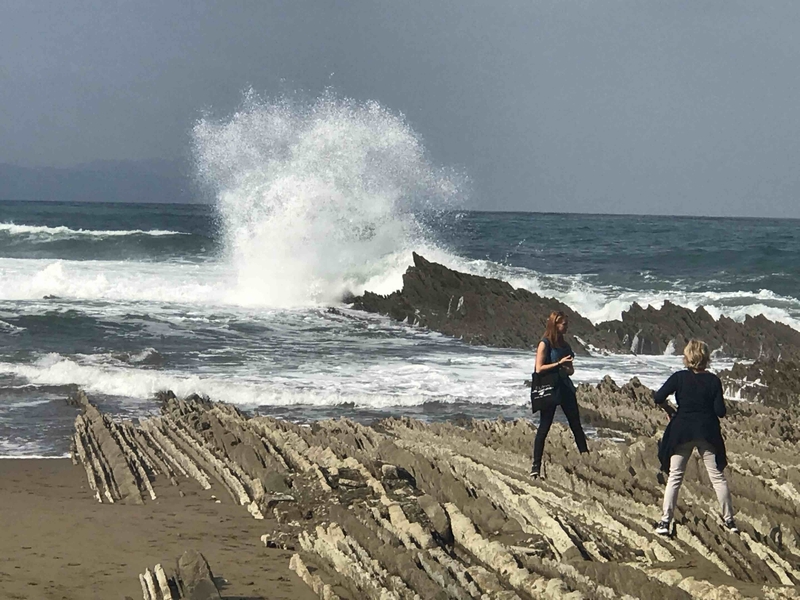
What has stood the test of time is the ‘Flysch’, a coastal shelf that extends from here south to Deba. This geological phenomenon dates back to the Mesozoic Era 60 to 80 million years ago, the effect of erosion on marl and sandstone deposits creating cliffs that resemble multi-layered mille-feuille pastries. They gave an almost hypnotic feeling to the second section of the day – the most expansively beautiful on the whole trip – which led us to our pick-up point at Elorriaga, from where we were driven to our third night’s billet, the historic three star Hotel Zubieta (below). Half-timbered in a grove of pampas grass, it felt rustic but it was just a few minutes’ walk into in Lekeitio centre with its handsome harbour front.
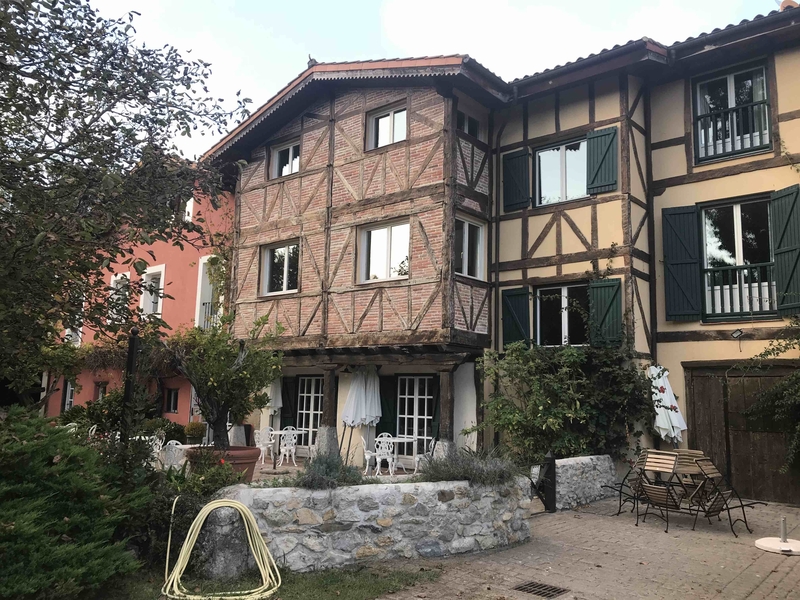
Fishing is still important here with one annual festival to San Pedro (June 29-30 in 2019) a reminder of its prosperous past thanks to the cod whaling industries. Hence the ceremonial casket carried by a dance troupe in the parade, symbolising the wealth that once swelled the coffers. The bearers take the strain as one of their number leaps up to perform an intricate dance called a Kaxarranka on the casket.
Much more bizarre is the other major fiesta, Goose Day (Sept 5) , in which participants attempt to decapitate a greased goose suspended on a rope above the harbour. It’s a kind of rite of passage for young Basque males as they launch themselves up from rowing boats, inevitably getting dunked in the sea, with or without a goose head in their hands. Animal rights guarantees they no longer use live geese for this culmination of the feast of the town’s patron saint, Angolin. Our evening in Lekeitio was far tamer and involved touring pintxos bars televising La Liga.
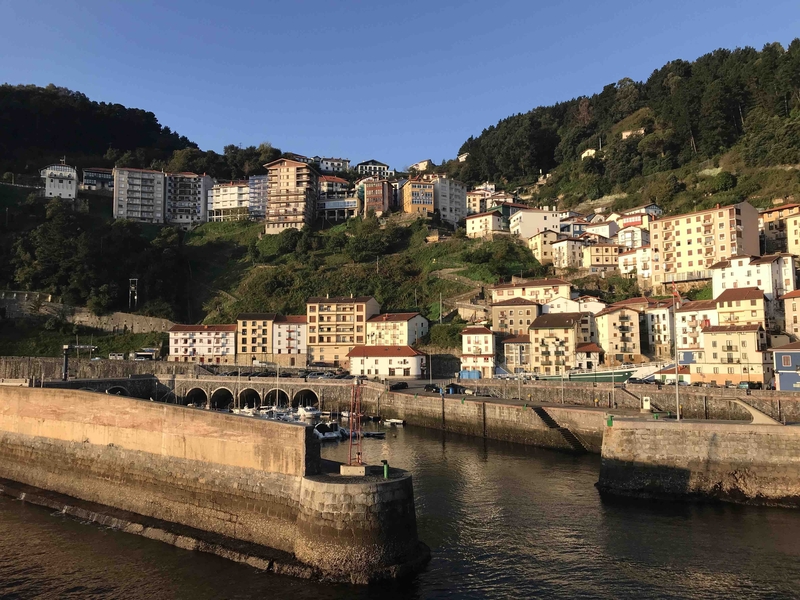
Cliffhanging (literally) would be much more exciting but we chickened out next morning in the Cape of Ogono Nature Reserve. Yes, by scrambling along the clifftop scree 950ft above the sea we were bound to have encountered some fascinating birdlife, but one glimpse over the edge and we headed back towards our day’s starting point, the vertiginous former cannery village of Elantxobe – a Basque echo of Italy’s Amalfi Coast.
Day Four was proving the most arduous and there’d be plenty of feathered friends along the (flat) Urdaibal Estuary UNESCO Biosphere Reserve later in the day. On the way we got lost a couple of times among the forests of holm oaks and wished we had a map alongside our written instructions. Still out of chaos came the most rewarding moment (turbot masterclass aside) of the entire trip.
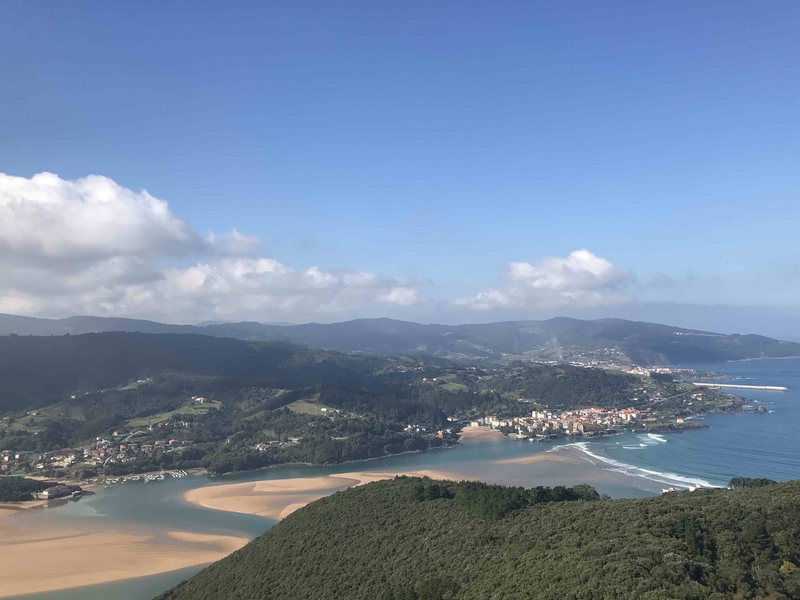
A long, stony trudge brought us out at the Hermitage of San Pedro de Atxarre. We expected a view; most of these medieval hermits, while cutting off from the world usually had a good view of what they’d left behind. The stone chapel here was again above 900ft and the panorama swept from Urdaibal’s wetlands and forests, home to Eurasian bitterns, spoonbills and fish eagles, the vast curves of the river down to the world class surfing resort of Mundaka and its pristine beaches. Big challenge: catch a left-hand barrel wave.
Our hotel that night, Castillo de Arteaga, was easily our most luxurious (and the only one with dinner included). What more could you want than a marble-white fairytale 14th century castle, restored and augmented in a neo-Gothic style in the 1850s by Eugenio Bonaparte, Napoleon the III’s son?
Nowadays it has been converted into a boutique Relais & Chateaux lodging with 13 huge bedrooms and suites with sumptuous bathrooms. The Napoleon Suite even has its own tower-top pool. Upon arrival we decamped to a separate rooftop terrace to survey the green upper reaches of Urdaibal and sip – what else? – glasses of Tzakoli.
Next day saw us eventually reach journey’s end – Bilbao. Highlights en route were The Peace Museum in Gernika, a four mile walk from Arteaga. Thanks to the Picasso painting we know it as Guernica, the market town that 80 years ago was obliterated in three hours of bombing by Nazi planes, allies of Franco’s Fascists in the Spanish Civil War. An estimated 250 inhabitants died in this hellish harbinger of Dresden and Hiroshima.
The Peace Museum graphically recreates the bombing and its aftermath before examining the consequences for humanity to this day.
One corner of the town that escaped was the historic symbol of Basque identity the Oak Tree of Guernica (Gernikako Arbola), beneath which generations of Basque leaders and Spanish kings have sworn to respect the region. That fierce independence is always evident, even in the mini Basque flags stuck into pintxos.

A taxi whisked us off for our final spectacular encounter with the Basque Coast and, yes, another hermitage beckoned – Gaztelugatxe perched on its own island and reached by a well-trodden footbridge. Make it up the 237 steps and you have to toll the bell three times and make a wish. Mine was to discover the best pintxos bars in Bilbao – and with the help of Bilbao-ophile friends’ tips we made a good fist of it.

The best tip was, as in central San Sebastian, snub the restaurants and tour the pintxos bars. Oh, and don’t drink too much vermut. We ignored that last tip, but followed the first.
It helped that our B&B, the eccentric (ponder the in-house farm tableau, above) Iturriena Ostatuta, was bang in the middle of the Old Town, just five minutes’ stroll from the Neoclassical Plaza Nueva, one of the most harmonious of Iberian squares with a cornucopia of classy pintxos on offer.
To get our Bilbao evening of to the perfect start we had crossed into the New Town for a large plate of the world’s best jamon, Joselito Bellota, at La Vina Del Ensanche, from whose encyclopaedic wine list provided us with a classy Ribera del Duero red. After which no need to stray beyond the Plaza Nueva. If you have to select one bar aim for Gure Toki in the corner, whose small plates are contemporary and imaginative. If you’d prefer a ravishing heritage ambience move on a few doors to Victor Montes, oozing 180 years of experience in the field.
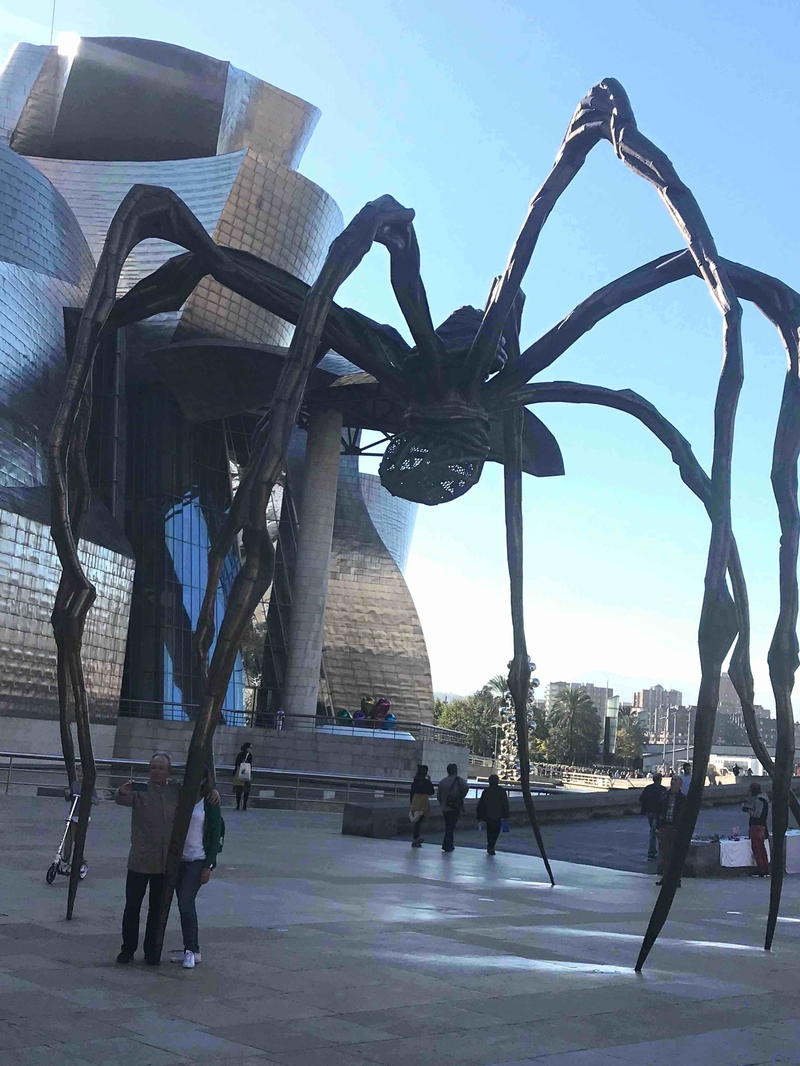
It was in the dining room here in 1997 that architect Frank Gehry and city bigwigs signed the contract to build the Guggenheim, catalyst for Bilbao’s regeneration. We had revisited the gallery on the banks of the River Nervion. It is as striking as ever, but I still find the permanent collections hit and miss – too many of Cezanne and Van Gogh’s duller oils.
Call me Philistine, but I prefer the edible works of art the city’s Mercado de la Ribera, on a different stretch of the Nervion quays. Beautifully restored, it’s a perfect blend of traditional produce market and eat-in food hall. With a long lunchtime to occupy before our plane back we ordered an array of pintxos featuring every variety of seafood and toasted our journey’s end with Tzakoli. How ever do you put weight on doing a long walk? Let’s call it the Pintxos Pilgrimage.
Factfile
The ‘Culture and ‘Camino’: Guernica, Guggenheim and Much More’ walking trip from Purely Pyrenees costs 830€ per person (with extra airport pick-up 875€) without flights. To give us more time to explore Getaria and its fish specialities they booked us an extra night at the Pension Katrepona, which charges 65€-85€ per night for a double room, depending on the season
Purely Pyrenees offers self-guided walking and cycling tours in the Pyrenees for English-speaking visitors, taking in France and Northern Spain. For more information and reservations visit theirwebsite. website.
Neil flew from Manchester to Bilbao with easyJet, which runs three flights a week each way in winter, then six from April onwards.


